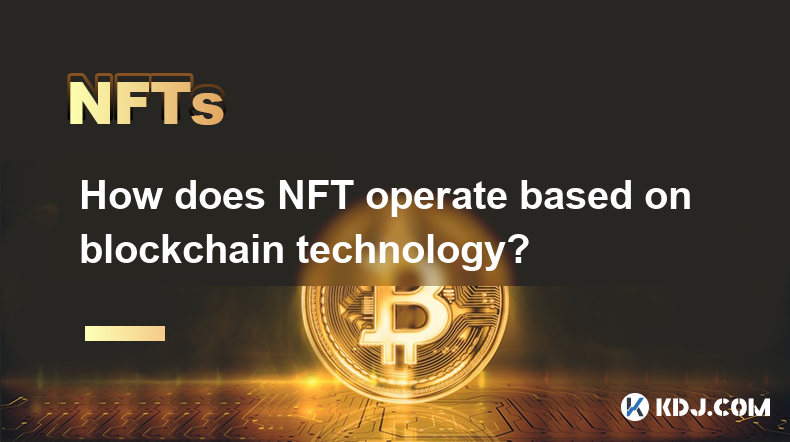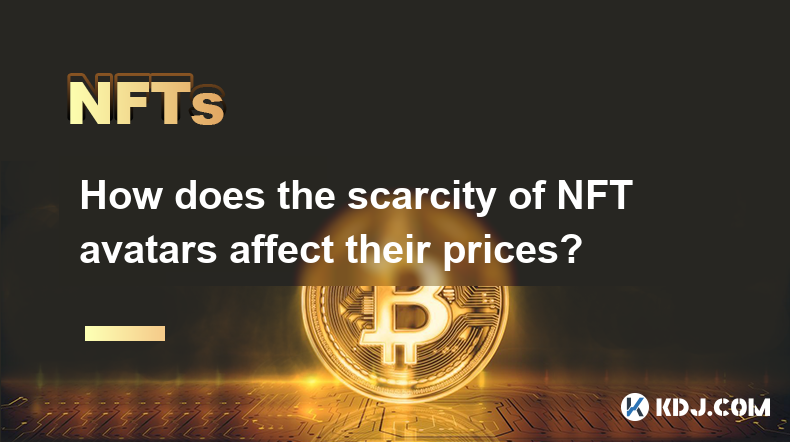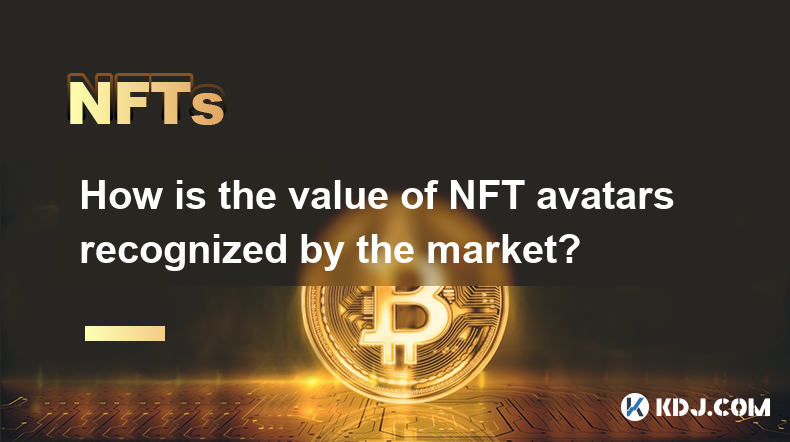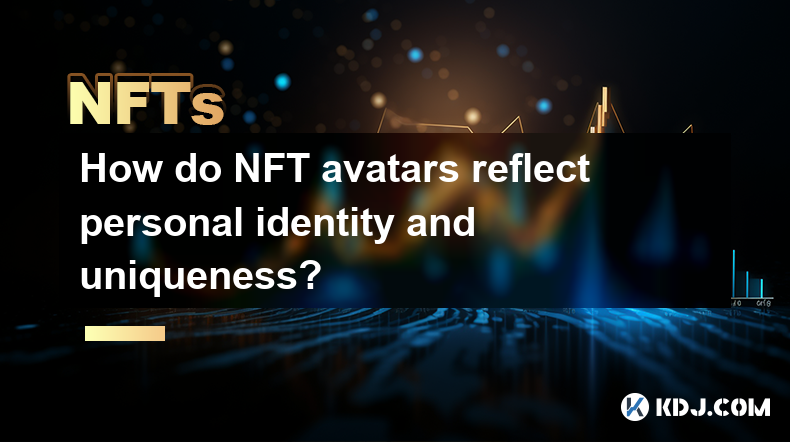-
 Bitcoin
Bitcoin $82,532.5653
-0.47% -
 Ethereum
Ethereum $1,824.2400
-0.22% -
 Tether USDt
Tether USDt $1.0002
0.04% -
 XRP
XRP $2.0891
-2.87% -
 BNB
BNB $598.7668
-1.02% -
 Solana
Solana $125.5207
0.59% -
 USDC
USDC $0.9999
-0.03% -
 Dogecoin
Dogecoin $0.1644
-3.47% -
 Cardano
Cardano $0.6468
-4.11% -
 TRON
TRON $0.2341
1.48% -
 Toncoin
Toncoin $3.9443
3.93% -
 Chainlink
Chainlink $13.3725
-2.17% -
 UNUS SED LEO
UNUS SED LEO $9.1022
-5.82% -
 Stellar
Stellar $0.2658
-0.94% -
 Avalanche
Avalanche $18.7494
-2.83% -
 Shiba Inu
Shiba Inu $0.0...01225
-3.10% -
 Sui
Sui $2.2404
-5.15% -
 Hedera
Hedera $0.1615
-5.38% -
 Polkadot
Polkadot $4.0239
-1.65% -
 Litecoin
Litecoin $82.5262
-3.94% -
 MANTRA
MANTRA $6.2971
-0.12% -
 Bitcoin Cash
Bitcoin Cash $300.5206
-2.01% -
 Dai
Dai $0.9999
-0.01% -
 Bitget Token
Bitget Token $4.4612
-3.72% -
 Ethena USDe
Ethena USDe $1.0000
0.00% -
 Pi
Pi $0.7041
-8.37% -
 Hyperliquid
Hyperliquid $12.6570
0.20% -
 Monero
Monero $216.6236
0.33% -
 Uniswap
Uniswap $5.9290
-0.81% -
 Aptos
Aptos $5.3023
0.05%
How does NFT operate based on blockchain technology?
NFTs, leveraging blockchain's immutable ledger, record ownership and authenticity via minting, listing, buying, and selling processes, each cryptographically verified by smart contracts automating ownership transfer.
Mar 14, 2025 at 12:20 am

How Does NFT Operate Based on Blockchain Technology?
Key Points:
- NFTs leverage blockchain's immutable ledger to record ownership and authenticity.
- The process involves minting, listing, buying, and selling, each with unique cryptographic verification.
- Different blockchains offer varied functionalities and fees impacting NFT operations.
- Smart contracts automate the transfer of ownership and enforce specific conditions.
- Metadata associated with the NFT provides crucial information about the digital asset.
- Interoperability between different blockchains is a growing area of development for NFTs.
How NFTs Operate Based on Blockchain Technology:
- Understanding Blockchain's Role:
Blockchain technology forms the bedrock of NFT functionality. At its core, a blockchain is a decentralized, distributed ledger that records transactions across multiple computers. This distributed nature makes it extremely difficult to alter or delete information once it's recorded, ensuring immutability and transparency. This immutability is crucial for NFTs because it guarantees the authenticity and provenance of the digital asset. Each transaction involving an NFT, from its creation (minting) to subsequent sales, is recorded as a block on the blockchain, creating a permanent and verifiable history. This history is publicly accessible (depending on the blockchain's design), allowing anyone to verify the ownership and transaction history of a specific NFT. This transparency eliminates the possibility of fraudulent duplication or claims of ownership, a significant advantage over traditional digital assets which are easily copied and distributed. The cryptographic hashing algorithm used in blockchain technology further enhances security by ensuring that any change to a block would be immediately detectable, preventing tampering. Different blockchains, such as Ethereum, Solana, Polygon, and Tezos, each have their unique characteristics in terms of transaction speed, fees, and scalability, influencing the choice of blockchain for NFT creation and trading. The selection of a particular blockchain often depends on factors like the desired level of security, transaction costs, and the specific functionalities offered by the platform. For example, Ethereum, while being the most established platform, can be expensive due to high gas fees, leading creators and buyers to explore alternative blockchains offering lower transaction costs. Understanding the specific characteristics of the underlying blockchain is critical to understanding how an NFT operates. The decentralized nature of the blockchain also contributes to the perceived value of NFTs, as ownership is not controlled by a central authority, reducing the risk of censorship or manipulation.
- The Minting Process:
Minting an NFT is the process of creating and registering it on a blockchain. This involves several steps. First, the creator prepares the digital asset – be it an image, video, audio file, or even a piece of virtual real estate – and then uploads it to a chosen blockchain's network. The asset is then associated with metadata, which contains crucial information such as the asset's name, description, and unique identifier. This metadata is essential as it provides context and value to the NFT. The creator then uses a specialized software or platform to generate a unique cryptographic token representing ownership of the asset. This token is linked to the asset's metadata on the blockchain. The minting process involves paying a transaction fee (often referred to as "gas" on the Ethereum network), which compensates the network's validators for processing and recording the transaction. The amount of this fee varies depending on the blockchain's network congestion and the complexity of the minting process. The minted NFT is then stored on the blockchain as a unique, non-fungible token, meaning it cannot be directly exchanged for another NFT at a fixed ratio like fungible tokens (e.g., Bitcoin or Ethereum). The minting process ensures that the NFT is unique and its ownership is verifiable on the blockchain. Different platforms offer varying minting options, with some offering simpler interfaces and automated processes while others provide more customization and control over the minting process. The choice of minting platform often depends on the creator's technical expertise and the specific requirements of the project.
- Listing and Selling NFTs:
Once an NFT is minted, it can be listed for sale on various NFT marketplaces. These marketplaces act as intermediaries, connecting buyers and sellers. Listing an NFT usually involves setting a price or accepting bids from potential buyers. The marketplace utilizes smart contracts to automate the transaction process. Smart contracts are self-executing contracts with the terms of the agreement written directly into code. When certain conditions are met (e.g., a buyer submits a payment), the smart contract automatically executes the transaction, transferring ownership of the NFT from the seller to the buyer. The transaction is recorded on the blockchain, providing a transparent and auditable record of the sale. The process is secure because it doesn't rely on intermediaries to manage the transfer of funds or ownership. The blockchain ensures the integrity of the transaction, preventing fraud or double-spending. Different marketplaces have different fees and functionalities, and creators often choose a platform based on factors like its popularity, ease of use, and the fees charged. Some marketplaces specialize in particular types of NFTs, while others cater to a broader range of digital assets. The choice of marketplace can significantly impact the visibility and reach of the NFT, influencing its potential market value. The listing and selling process is crucial for determining the market value of an NFT, as it allows for interaction between buyers and sellers, determining the price through market forces.
- Buying NFTs:
Buying an NFT typically involves navigating an NFT marketplace and selecting the desired NFT. After selecting the NFT, the buyer needs to connect a compatible cryptocurrency wallet to the marketplace. This wallet holds the cryptocurrency needed to purchase the NFT. The buyer then needs to review the details of the NFT, including its metadata, and confirm the purchase. Upon confirmation, the marketplace facilitates the transfer of cryptocurrency from the buyer's wallet to the seller's wallet. Simultaneously, ownership of the NFT is transferred from the seller to the buyer, facilitated by a smart contract. This entire transaction is recorded on the blockchain, creating an immutable record of the ownership transfer. The security of the transaction is ensured by the cryptographic security of the blockchain and the smart contract's automation. The buyer needs to understand the different fees associated with the transaction, including marketplace fees and gas fees (network transaction fees). The gas fees can vary depending on the blockchain's network congestion. Buyers should carefully review the details of the NFT before purchasing to ensure they understand what they are buying and its associated risks. The buying process is relatively straightforward but requires a basic understanding of cryptocurrency wallets and blockchain technology.
- Metadata and NFT Attributes:
Metadata associated with an NFT provides critical information about the digital asset. This metadata is stored off-chain, meaning it's not directly stored on the blockchain but linked to the NFT through a unique identifier. This metadata typically includes details like the asset's name, description, image file, and other relevant attributes. This information provides context and value to the NFT, differentiating it from other NFTs. The metadata can also include information about the creator, the date of creation, and any relevant provenance details. The accessibility and reliability of metadata are crucial factors in determining the value and authenticity of an NFT. The ability to verify the metadata's integrity is crucial for ensuring that the NFT is genuine and hasn't been tampered with. Changes to metadata after minting are possible, depending on the design of the NFT and its associated smart contract, but such changes are often recorded on the blockchain, maintaining transparency and accountability. The metadata's format and structure can vary, but common standards are emerging to ensure interoperability between different NFT platforms.
- Interoperability and Cross-Chain Functionality:
Interoperability between different blockchains is a significant challenge and a growing area of development for NFTs. Currently, NFTs are often confined to a single blockchain, limiting their transferability and usability across different platforms. Efforts are underway to create solutions that enable seamless transfer of NFTs between different blockchains. This cross-chain functionality would enhance the liquidity and accessibility of NFTs, enabling a more interconnected and efficient NFT ecosystem. Various technologies are being explored to achieve interoperability, including bridges, sidechains, and cross-chain protocols. These solutions aim to overcome the technical challenges associated with transferring data and assets between different blockchain networks while maintaining security and reliability. Increased interoperability would likely lead to a more robust and vibrant NFT market, fostering greater innovation and participation.
FAQs:
Q: What is a blockchain and how does it relate to NFTs?
A: A blockchain is a decentralized, distributed ledger that records transactions across multiple computers. Its immutable nature ensures the authenticity and provenance of NFTs, making it difficult to duplicate or alter ownership records. Each NFT transaction is recorded on the blockchain, creating a permanent and verifiable history.
Q: How are NFTs different from other digital assets?
A: Unlike easily copied digital files, NFTs are unique and non-fungible tokens, representing ownership of a specific digital asset. This uniqueness is guaranteed by blockchain technology, making NFTs verifiable and preventing fraud.
Q: What are smart contracts and how do they work in the context of NFTs?
A: Smart contracts are self-executing contracts with terms written in code. In the NFT world, they automate the transfer of ownership and enforce conditions, ensuring secure and transparent transactions without intermediaries.
Q: What are the risks associated with NFTs?
A: Risks include volatility of the market, potential for scams and fraud, and the technical complexity of the underlying technology. Understanding the risks involved is crucial before investing in NFTs.
Q: What are the different types of NFTs?
A: NFTs encompass a wide range of digital assets, including images, videos, audio, virtual real estate, and even collectibles. The variety of assets continues to grow as the NFT ecosystem evolves.
Q: How do I choose a blockchain for minting my NFT?
A: The choice depends on factors like transaction fees, network speed, scalability, and the specific functionalities offered by the blockchain. Ethereum is widely used but can be expensive; alternatives like Solana and Polygon offer lower costs.
Q: What are gas fees and how do they affect NFT transactions?
A: Gas fees are transaction fees paid to the blockchain network for processing transactions. They can vary significantly depending on network congestion, impacting the cost of minting and trading NFTs.
Q: What is metadata and why is it important for NFTs?
A: Metadata is data about the NFT, including its name, description, and image. It provides context and value, making NFTs unique and verifiable. Its integrity is vital for ensuring the authenticity of the NFT.
Q: What is the future of NFTs?
A: The future of NFTs is uncertain but holds potential for various applications, including digital art, gaming, collectibles, and even real-world assets. Continued development and adoption will shape its future trajectory.
Disclaimer:info@kdj.com
The information provided is not trading advice. kdj.com does not assume any responsibility for any investments made based on the information provided in this article. Cryptocurrencies are highly volatile and it is highly recommended that you invest with caution after thorough research!
If you believe that the content used on this website infringes your copyright, please contact us immediately (info@kdj.com) and we will delete it promptly.
- The 2025 cryptocurrency market started slower than many investors expected.
- 2025-03-31 21:40:13
- Darknet markets are increasingly returning to bitcoin (BTC) as their primary cryptocurrency
- 2025-03-31 21:40:13
- Hut 8 Corp. Partners with Eric Trump to Launch American Bitcoin Corp.
- 2025-03-31 21:35:13
- The Best Altcoins Are Safe Havens During US Tariff Turmoil
- 2025-03-31 21:35:13
- Elon Musk Squashes Rumors of Dogecoin (DOGE) Integration with the U.S. Government
- 2025-03-31 21:30:12
- Today's Pi news presents an interesting development in the Pi token's market. Recently, we had the announcement for the PCM Wallet app's updates
- 2025-03-31 21:30:12
Related knowledge

How does the scarcity of NFT avatars affect their prices?
Mar 25,2025 at 11:07pm
Key Points:Limited Supply: NFT avatar scarcity is directly tied to the fixed supply of a collection. A smaller number of unique avatars inherently increases their value due to higher demand.Demand Dynamics: High demand, fueled by factors like community hype, celebrity endorsements, and utility within a metaverse, significantly inflates prices.Rarity Att...

Can NFT avatars be copied or stolen?
Mar 21,2025 at 06:35am
Key Points:NFTs, by their nature, are unique and verifiable on the blockchain. However, the image associated with an NFT avatar can be copied.Copying an image doesn't grant ownership of the NFT itself. The original NFT and its ownership remain on the blockchain.Theft of an NFT involves gaining unauthorized access to a cryptocurrency wallet holding the N...

What is the creation process of NFT avatars?
Mar 19,2025 at 09:15pm
Key Points:NFT avatar creation begins with a concept and design.Various digital art tools and techniques are employed.Minting the avatar involves choosing a blockchain and marketplace.Metadata is crucial for defining the avatar's attributes.Promotion and marketing are vital for visibility and sales.What is the creation process of NFT avatars?The creatio...

Why do celebrities use NFT avatars as personal identification?
Mar 20,2025 at 07:15pm
Key Points:NFTs offer celebrities a unique and verifiable digital identity, distinct from easily imitated social media profiles.Using NFT avatars allows celebrities to control their online image and branding more effectively.NFT avatars can provide celebrities with new revenue streams through sales, licensing, and community building.The use of NFT avata...

How is the value of NFT avatars recognized by the market?
Mar 21,2025 at 05:49am
Key Points:NFT avatar value is subjective and influenced by various factors, lacking a universally accepted valuation metric.Rarity, provenance, utility, community engagement, and the project's overall success significantly impact an avatar's value.Market demand, driven by trends, hype, and influencer adoption, plays a crucial role in price fluctuations...

How do NFT avatars reflect personal identity and uniqueness?
Mar 21,2025 at 12:00pm
Key Points:NFT avatars are unique digital representations, verifiable on the blockchain, offering a distinct online identity.Ownership and scarcity drive the value and perceived uniqueness of NFT avatars, reflecting personal investment and commitment.Customization options, from initial design to in-game attributes, allow for expression of individuality....

How does the scarcity of NFT avatars affect their prices?
Mar 25,2025 at 11:07pm
Key Points:Limited Supply: NFT avatar scarcity is directly tied to the fixed supply of a collection. A smaller number of unique avatars inherently increases their value due to higher demand.Demand Dynamics: High demand, fueled by factors like community hype, celebrity endorsements, and utility within a metaverse, significantly inflates prices.Rarity Att...

Can NFT avatars be copied or stolen?
Mar 21,2025 at 06:35am
Key Points:NFTs, by their nature, are unique and verifiable on the blockchain. However, the image associated with an NFT avatar can be copied.Copying an image doesn't grant ownership of the NFT itself. The original NFT and its ownership remain on the blockchain.Theft of an NFT involves gaining unauthorized access to a cryptocurrency wallet holding the N...

What is the creation process of NFT avatars?
Mar 19,2025 at 09:15pm
Key Points:NFT avatar creation begins with a concept and design.Various digital art tools and techniques are employed.Minting the avatar involves choosing a blockchain and marketplace.Metadata is crucial for defining the avatar's attributes.Promotion and marketing are vital for visibility and sales.What is the creation process of NFT avatars?The creatio...

Why do celebrities use NFT avatars as personal identification?
Mar 20,2025 at 07:15pm
Key Points:NFTs offer celebrities a unique and verifiable digital identity, distinct from easily imitated social media profiles.Using NFT avatars allows celebrities to control their online image and branding more effectively.NFT avatars can provide celebrities with new revenue streams through sales, licensing, and community building.The use of NFT avata...

How is the value of NFT avatars recognized by the market?
Mar 21,2025 at 05:49am
Key Points:NFT avatar value is subjective and influenced by various factors, lacking a universally accepted valuation metric.Rarity, provenance, utility, community engagement, and the project's overall success significantly impact an avatar's value.Market demand, driven by trends, hype, and influencer adoption, plays a crucial role in price fluctuations...

How do NFT avatars reflect personal identity and uniqueness?
Mar 21,2025 at 12:00pm
Key Points:NFT avatars are unique digital representations, verifiable on the blockchain, offering a distinct online identity.Ownership and scarcity drive the value and perceived uniqueness of NFT avatars, reflecting personal investment and commitment.Customization options, from initial design to in-game attributes, allow for expression of individuality....
See all articles






















































































